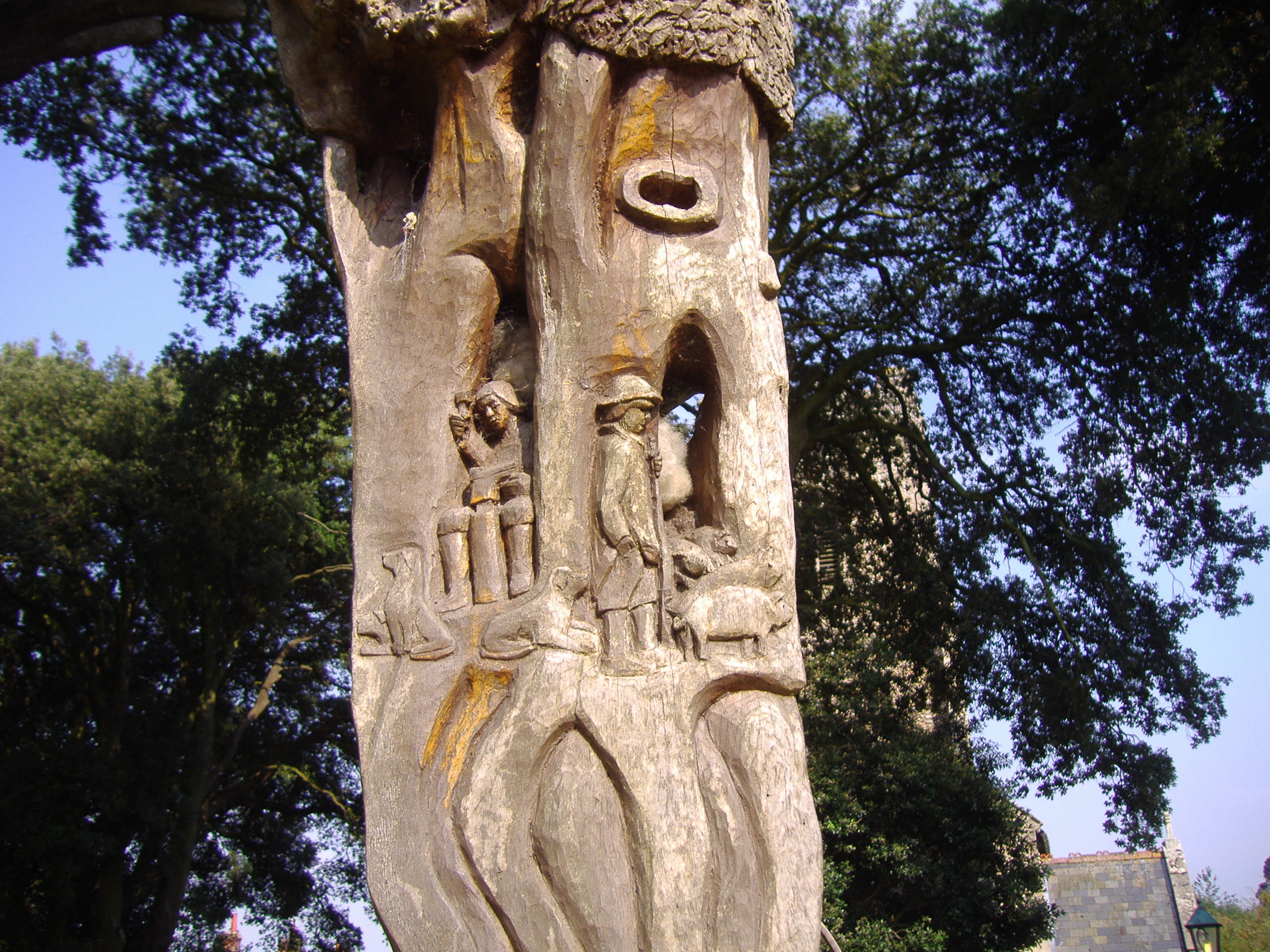Bale Oak on:
[Wikipedia]
[Google]
[Amazon]
 The Bale Oak was a large
The Bale Oak was a large
Norfolkchurches.co.uk's site
on All Saints, the church built next to the oak, including various photographs of the site where the oak stood.
with a small blurb and photograph of the site of the oak.
regarding the history of the tree. Individual oak trees Objects of historical interest in Norfolk 1860s individual tree deaths Individual trees in England Destroyed individual trees {{tree-stub
oak
An oak is a tree or shrub in the genus ''Quercus'' (; Latin "oak tree") of the beech family, Fagaceae. There are approximately 500 extant species of oaks. The common name "oak" also appears in the names of species in related genera, notably ''L ...
tree
In botany, a tree is a perennial plant with an elongated stem, or trunk, usually supporting branches and leaves. In some usages, the definition of a tree may be narrower, including only woody plants with secondary growth, plants that are ...
in Bale, a village in northern Norfolk, England
Norfolk () is a ceremonial and non-metropolitan county in East Anglia in England. It borders Lincolnshire to the north-west, Cambridgeshire to the west and south-west, and Suffolk to the south. Its northern and eastern boundaries are the North ...
that was over 500 years old when it was felled in 1860. It measured in circumference, and, reportedly, featured branches over long.
History
In the middle of the 14th century, All Saints church was erected immediately east of the site of the tree. According to folk legend, the tree had previously been a site for pre-Christian worship and may have been a part of a larger grove. In 1795, the oak was severely damaged. The oak was heavilypollarded
Pollarding is a pruning system involving the removal of the upper branches of a tree, which promotes the growth of a dense head of foliage and branches. In ancient Rome, Propertius mentioned pollarding during the 1st century BCE. The practice oc ...
and the removed bark and some of the wood was sold to the Hardys of Letheringsett for tanning.
Norfolk historian Rev. Blomfield recorded use of the oak in the 18th century:Archie Miles
:''A great oak at bathele near the church, its hollow so large that ten or twelve men may stand within it and a cobbler had his shop and lodge there of late and it is or was used for a swinestry''.
Deemed dangerous by the local populace, the abuse of the tree lead to its destruction in 1860. The Lord of the Manor Sir Willoughby Jones ordered the tree removed and, with much local mourning, the remains taken carted to Cranmer Hall at Fakenham
Fakenham is a market town and civil parish in Norfolk, England. It is situated on the River Wensum, about north west of Norwich. The town is the junction of several local roads, including the A148 from King's Lynn to Cromer, the A1067 to Norwic ...
.
The site is now covered by a grove of Holm oaks
''Quercus ilex'', the evergreen oak, holly oak or holm oak is a large evergreen oak native to the Mediterranean region. It is a member of the ''Ilex'' section of the genus, with acorns that mature in a single summer.
Description
An evergreen t ...
and is protected by the National Trust for Places of Historic Interest or Natural Beauty
The National Trust, formally the National Trust for Places of Historic Interest or Natural Beauty, is a charity and membership organisation for heritage conservation in England, Wales and Northern Ireland. In Scotland, there is a separate and ...
.
Further sources
* Leaflet: Joyce E. Stone. 1966. As big as Bale Oak.. * Newspaper Article: Eastern Daily Press. 2015. Riddle of two skeletons found by builders in a former village pub. 8 December. * Monograph: Bryant, T. H. 1902. Hundred of Holt. The Churches of Norfolk. Vol IX. p 2.References
External links
Norfolkchurches.co.uk's site
on All Saints, the church built next to the oak, including various photographs of the site where the oak stood.
with a small blurb and photograph of the site of the oak.
regarding the history of the tree. Individual oak trees Objects of historical interest in Norfolk 1860s individual tree deaths Individual trees in England Destroyed individual trees {{tree-stub